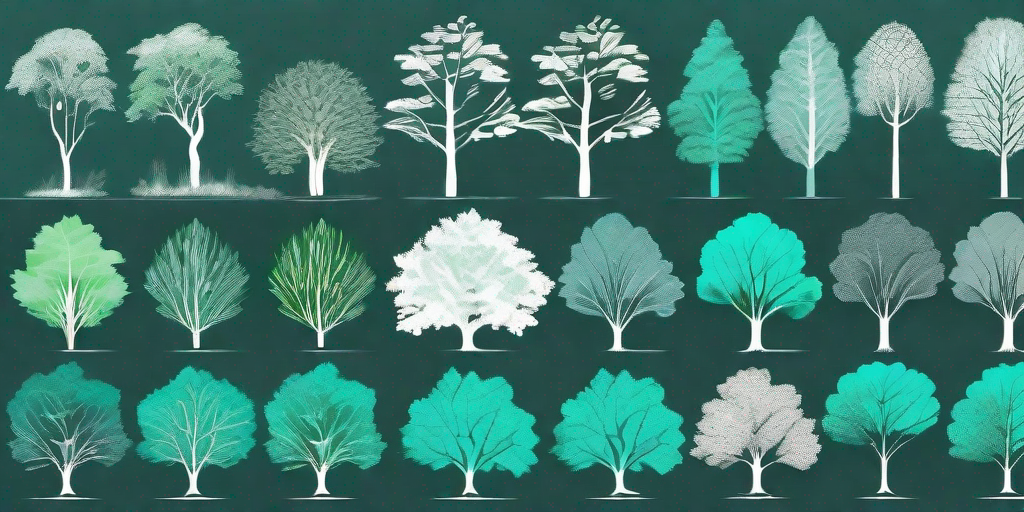
Ash trees, known scientifically as Fraxinus, are a sight to behold. Their majestic stature and the intricate patterns of their bark are enough to make any nature lover's heart flutter. But how can you identify an ash tree from its leafy brethren? Well, buckle up, because you're about to embark on a journey of tree identification that's as exciting as a high-speed car chase (but with less potential for traffic violations).
Characteristics of Ash Trees
First things first, let's talk about the unique characteristics of ash trees. These aren't your run-of-the-mill, dime-a-dozen trees. No, sir! Ash trees are the James Bond of the tree world - suave, sophisticated, and easy to spot once you know what you're looking for.
One of the most distinguishing features of ash trees is their opposite branching pattern. This means that the branches and buds directly mirror each other on opposite sides of the stem. It's like looking at a reflection in a mirror, or watching synchronized swimmers perform a flawless routine.
Leaves
But the fun doesn't stop there. Ash trees also have compound leaves. These are like the Swiss army knives of leaves, composed of 5 to 11 leaflets arranged along a central stalk. Each leaflet is lance-shaped and finely toothed along the edges, perfect for cutting through the air as they sway in the breeze.
And let's not forget about the color. Ash tree leaves are a vibrant green that turns a stunning purple or yellow in the fall. It's like Mother Nature's own fashion show, and the ash tree is her top model.
Bark
Now, let's talk about the bark. Ash tree bark is a sight to behold, with a unique diamond pattern that's as intricate as a piece of fine jewelry. It's gray to brown in color, with deep furrows that create the diamond pattern. It's like the tree is wearing a suit of armor, ready to take on the world.
Young ash trees, however, have smoother bark. It's like they're in their awkward teenage phase, still waiting to grow into their diamond-patterned glory.
Types of Ash Trees
Just like humans, not all ash trees are the same. There are several different types, each with its own unique characteristics. It's like a big, leafy family reunion, with each tree bringing its own personality to the table.
Let's meet the family, shall we?
White Ash
First up is the white ash, also known as Fraxinus americana. This tree is the most common type of ash in the U.S. It's like the big brother of the family, standing tall and proud with its height of up to 80 feet.
The white ash has dark green leaves that turn a beautiful purple color in the fall. It's like the tree is putting on its own fireworks display, lighting up the forest with its vibrant colors.
Black Ash
Next up is the black ash, or Fraxinus nigra. This tree is a bit smaller than its white counterpart, reaching heights of up to 60 feet. But what it lacks in height, it makes up for in beauty. The black ash has dark, furrowed bark and leaves that turn a stunning yellow in the fall. It's like the tree is a living piece of art, painting the forest with its vibrant hues.
Black ash trees are also known for their high-quality wood, which is used for making furniture and baskets. It's like the tree is not just a pretty face, but also a hard worker.
FAQs
What does an ash tree look like?
An ash tree is a tall, majestic tree with a unique diamond-patterned bark and compound leaves. It's like a supermodel of the tree world, turning heads with its stunning appearance.
What color are ash tree leaves?
Ash tree leaves are a vibrant green that turns a stunning purple or yellow in the fall. It's like the tree is putting on its own fashion show, with a new outfit for each season.
What is ash wood used for?
Ash wood is known for its strength and elasticity, making it perfect for furniture, flooring, and sports equipment. It's like the tree is a multi-talented star, excelling in both beauty and practicality.
Conclusion
So there you have it, a comprehensive guide to identifying ash trees. With their unique characteristics and stunning beauty, these trees are a true marvel of nature. So the next time you're out for a walk in the woods, keep an eye out for the James Bond of trees. Who knows, you might just fall in love.
Remember, tree identification is not just about knowing what you're looking at. It's about appreciating the beauty and diversity of nature. So go out there, explore, and discover the beauty of ash trees for yourself.















